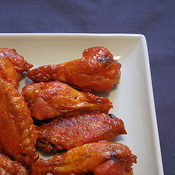
2. Buy a wedge from a wheel of cheese rather than pre-grated cheese. Many of us buy grated cheese for its convenience, but "it's super easy to use a microplane and then you're guaranteed a pure product," says Thorpe. 3. If you're going to buy pre-grated Parmesan, look for American producers with good reputations. 4. In a supermarket, shop for Parmesan in the deli department first. 5. Buy grated cheese at a specialty foods shop. Thorpe. Also, if you ask, a small retailer will likely be accommodating and grate the cheese for you.
When eating this fruit at any cost avoid the seeds because they contain the poison hypoglycin. Nausea, fatigue, and can even lead to a lethal end to someone who consume the seeds. Brain. There are many cultures from all over the world that eat entrails including the brain. In many parts of Asia, there are recipes that include monkey brain.
It is not exactly poisonous food, but it can cause Variant Creutzfeldt-Jakob disease. The disease is similar to Mad Cow disease. Fortunately, the spreading on domesticated animals is nonexisting in most parts of the world. Monkeys, on the other hand, are not domestic animals and therefore may be carriers. It is best to avoid this exotic dish even if you are a great adventurer. Please enable JavaScript to view the comments powered by Disqus.
There are actually some issues you've got to keep in mind to be able to keep away from consuming poisoned or stale food. It doesn't subject if you are eating out or consuming at home. You may fall victim to food poisoning, so it's undoubtedly a great notion to get observe of these suggestions.
I am going for realistic here, folks. I'm sure some of you can relate! My main goal is to have at least 1 meat, 1 fruit, 1 veggie, 1 dairy, and 1 grain each day. When we have it, I add sour cream to her dinner for the extra fat.
Rachel is still nursing but I do give her a bottle twice a day. It's all of 2 ounces but, it does help satisfy her and round out her lunch and dinner. The nursing hasn't slowed down, so we're all good with it. Rachel's "twin" also liked to feed herself. How do you plan to keep your hungry crew fed,
How to make natural food coloring, The answer’s easy. Here’s how to make it homemade from scratch in shades of red, green, yellow, and blue, with no artificial coloring, no preservatives, and no monumental price tag. Just fruits and vegetables. Knowing how to make natural food coloring from scratch is something we’ve been wanting to do for literally years and years and years.
And after trying countless different approaches, we finally we have the DIY natural food coloring recipe we’ve been wanting, seeking, and needing. No artificial colors. No preservatives. And no monumental price tag. Just vegetables and fruits and water. Keep in mind that when mixed into frostings or icing, natural food coloring will create lovely pastels rather than incredibly vibrant and nearly neon hues. 1. Choose your color below and simply follow the instructions. In a high-speed blender or food processor, mix the beets and juice together until smooth.
Tags:
How Make Food
